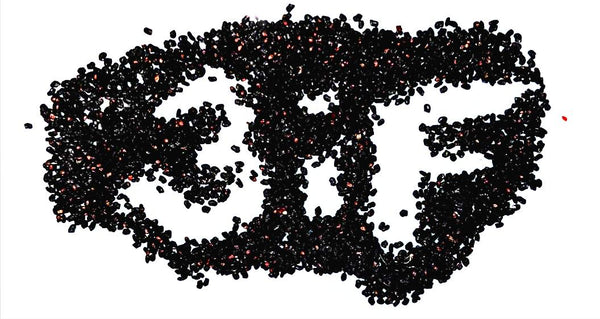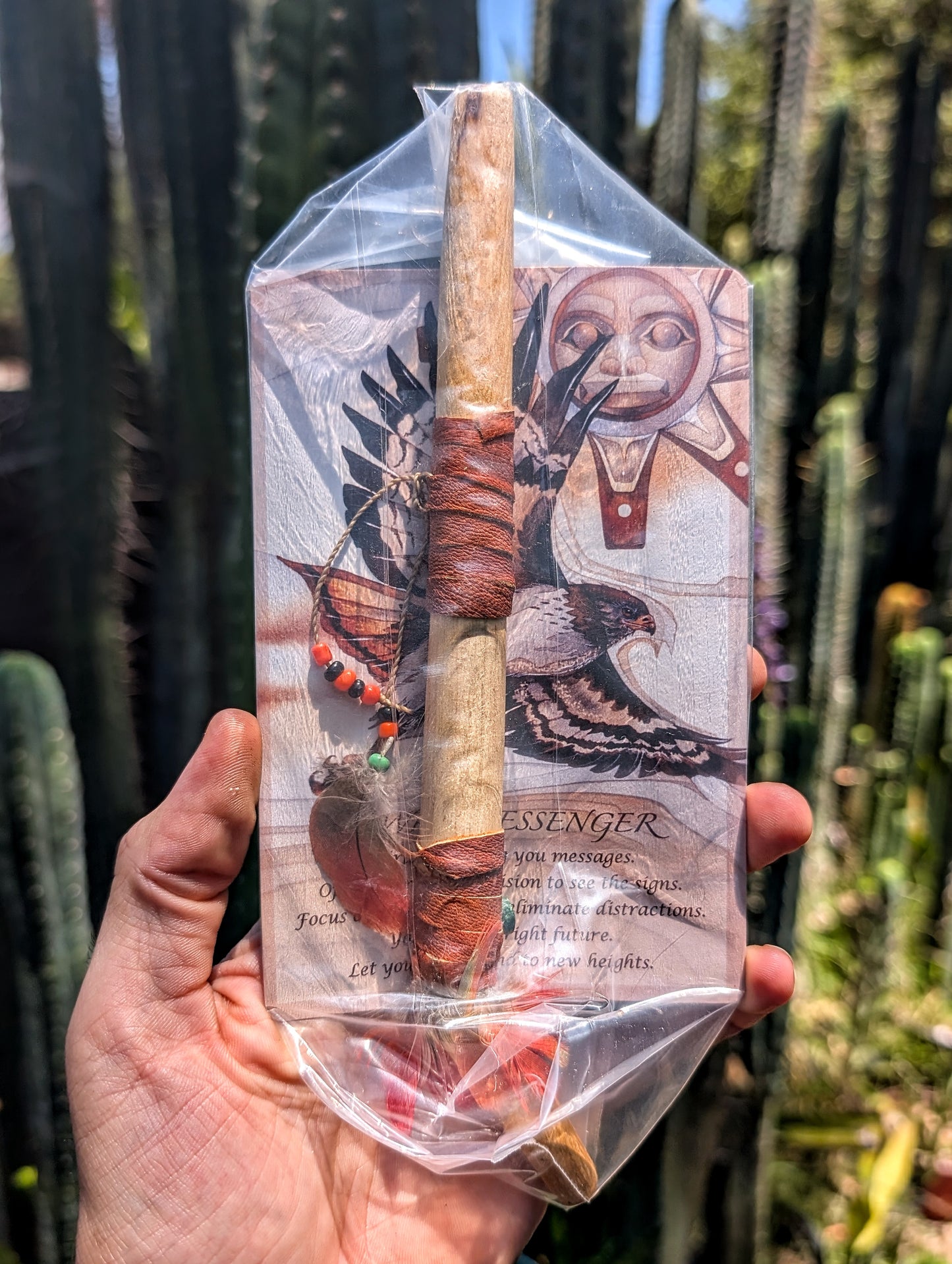A Tepi is a blowpipe used to administer rapé from one person to another—often from a healer to a recipient. The act is considered deeply intentional and sacred, facilitating energetic alignment, emotional release, and spiritual insight. The Tepi creates a bridge between breath, medicine, and spirit.
✦ Spiritual Significance
For the Shipibo, the Tepi is not just a tool—it’s a channel for connection. The sacred snuff, guided through the Tepi, is believed to clear stagnant energy, sharpen the mind, and open spiritual pathways. Used respectfully and with clear intention, it becomes a means of prayer, protection, and purification.
This piece is made from natural Palo Santo wood with a beautiful fragrance, tightly wrapped in leather straps, and decorated with vibrant jungle feathers and seed beads.
Each Tepi comes wrapped with an illustrated card featuring native-inspired imagery and guiding words.
Spiritual Symbolism of the Hawk
-
Messenger of the Divine: Hawks are often seen as messengers from the spirit world or higher realms. Their flight through the sky is viewed as a bridge between Earth and the heavens.
-
Vision and Insight: With their incredible eyesight, hawks symbolize clarity, inner wisdom, and the ability to see the bigger picture. They encourage humans to look beyond surface appearances.
-
Power and Focus: As skilled hunters, hawks represent sharp focus, determination, and instinctual precision. Spiritually, they remind people to trust their inner knowing and act with purpose.
In Native American Cultures
The hawk holds unique meaning among different tribes, but some core themes include:
1. Guardian and Protector
-
Many Plains tribes consider hawks as protective spirits, guiding warriors in battle and warning of danger.
-
Feathers of hawks, especially the red-tailed hawk, were used in ceremonial attire and tools, signifying strength and vision.
2. Messenger Spirit
-
In tribes such as the Lakota, Cherokee, and Hopi, hawks are often regarded as messengers of the Creator or Great Spirit, bringing warnings or insights during visions or dreams.
3. Totem Animal
-
As a spirit animal or totem, the hawk represents someone with strong intuition, leadership, and a connection to the divine mind. Hawk people are seen as watchers, seers, or visionaries.
In Ancient Cultures Worldwide
Ancient Egypt
-
The hawk (or falcon) was sacred to the god Horus, the sky god depicted with a falcon head.
-
Horus represented royalty, divine protection, and insight. The “Eye of Horus” symbolizes protection, power, and spiritual vision.
Celtic Traditions
-
The Celts associated hawks with clear sight, vigilance, and intelligence.
-
They were believed to be omens or signs of transformation and spiritual messages from the Otherworld.
Greek and Roman Mythology
-
Hawks were connected to Apollo, the god of prophecy and vision, and Jupiter (Zeus), symbolizing authority and the will of the gods.
Hinduism
-
The hawk is linked to Garuda, a bird-like divine being and the mount of Vishnu, representing courage, speed, and the destruction of evil.
The hawk is a powerful symbol of vision, awareness, and divine connection. With its keen eyesight and soaring flight, it has long been revered as a messenger between the earthly realm and the world of spirit. In spiritual traditions across the globe, the hawk is not merely a bird of prey—it is a seer, a guardian, and a guide.
In Native American cultures, the hawk is often seen as a sacred protector and bearer of messages from the Creator. Its sudden appearance in the sky or close to one’s path is interpreted as a sign: a call to pay attention, to see clearly, and to trust in one's instincts. Among tribes such as the Lakota, Cherokee, and Hopi, hawks are respected as messengers who carry wisdom from the spirit world. The red-tailed hawk, in particular, holds a special place in ceremony and belief, with its feathers used in sacred regalia, prayer fans, and medicine bundles. These feathers are not only tools—they are considered vessels of spiritual power, carrying the essence of the bird’s elevated perception and strength.
The hawk also appears as a personal totem or spirit animal among many Indigenous people, guiding those with the ability to perceive truth beyond illusion. Those who are said to carry hawk medicine often possess strong intuition, leadership qualities, and a connection to the unseen. They are observers—watchers—who can sense the deeper movements of life and are called to act when the time is right.
Beyond the Americas, hawks have played a significant role in the sacred stories of many ancient civilizations. In Egypt, the hawk—or more precisely, the falcon—was linked to Horus, the sky god who symbolized divine kingship and the all-seeing eye. The Eye of Horus remains one of the most enduring symbols of protection and insight, representing the ability to perceive both the physical and spiritual realms.
In the Celtic world, hawks were seen as creatures of sharp intellect and higher perspective, often associated with omens or messages from the Otherworld. To the Greeks and Romans, hawks were sacred to the gods Apollo and Jupiter, representing prophecy, vision, and the expression of divine will. In Hindu tradition, hawks are associated with Garuda, a powerful celestial being who serves as the mount of the god Vishnu and who represents the force that dispels darkness and evil.
Across these traditions, the hawk consistently represents a being that sees more than others—one who watches from above, not to dominate, but to understand. Spiritually, the hawk challenges us to rise above our immediate concerns and see the greater picture. It reminds us to trust our intuition, to be vigilant and clear-minded, and to act with purpose and precision. The hawk teaches that clarity comes when we quiet the noise of the world and listen to the guidance that moves through the silence.
When a hawk appears in waking life or dreams, it often signals that insight is approaching or that one must remain alert to a shift in circumstances. It may be an encouragement to step more fully into one's own authority, to embrace leadership, or to sharpen one's awareness. In all cases, the hawk reminds us that we are not alone—that the spiritual world is watching, guiding, and calling us to a higher vision of who we are and what we can become.
Note: Each piece is unique. Minor variations in size, color, and carving are part of the natural artistry and spiritual energy of the object.


